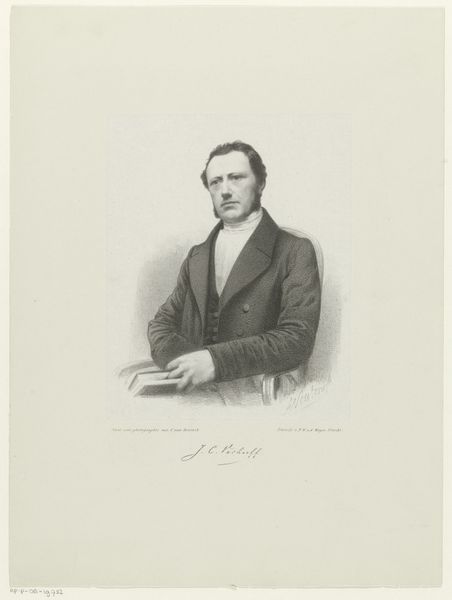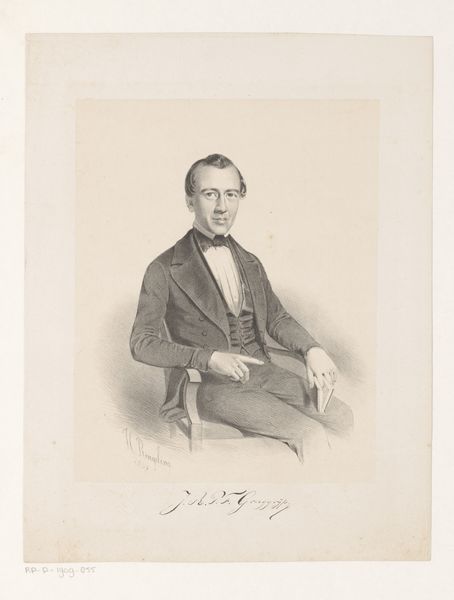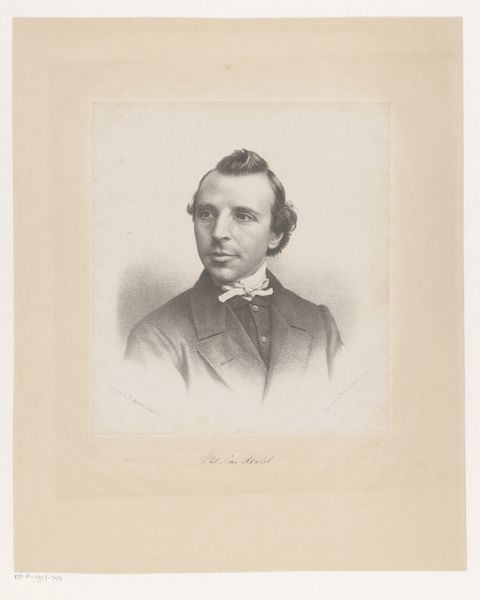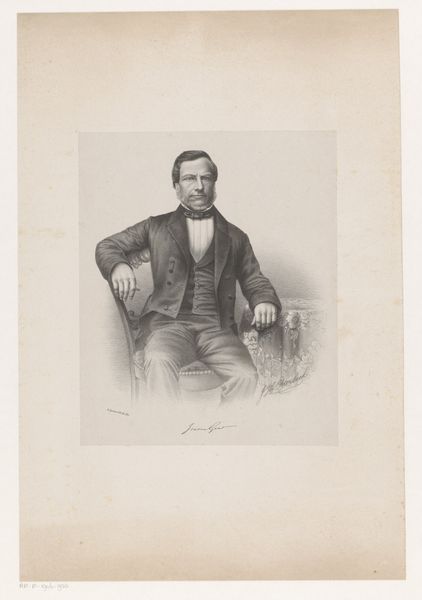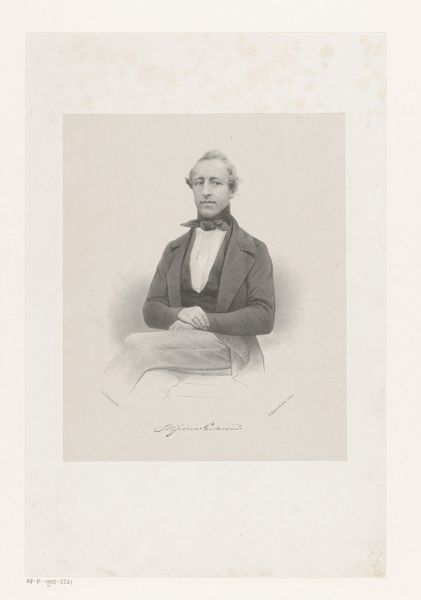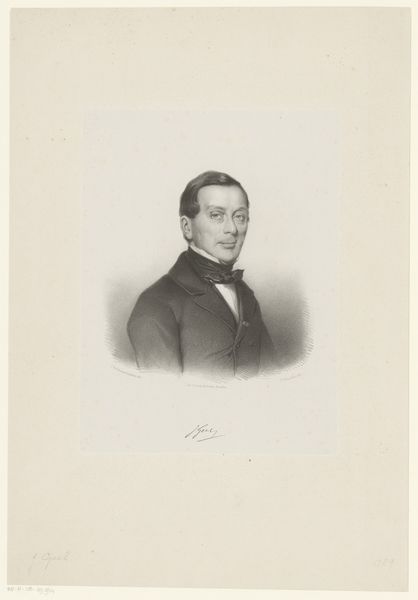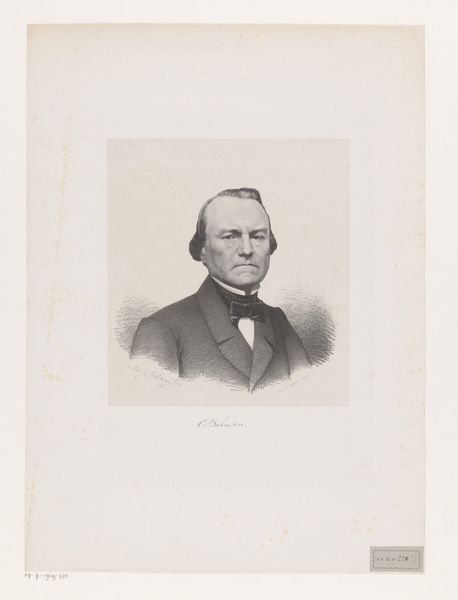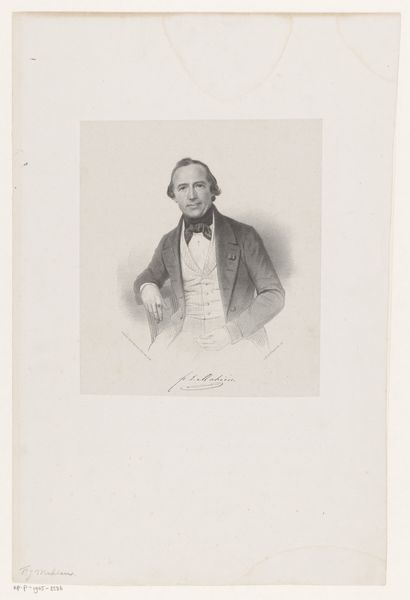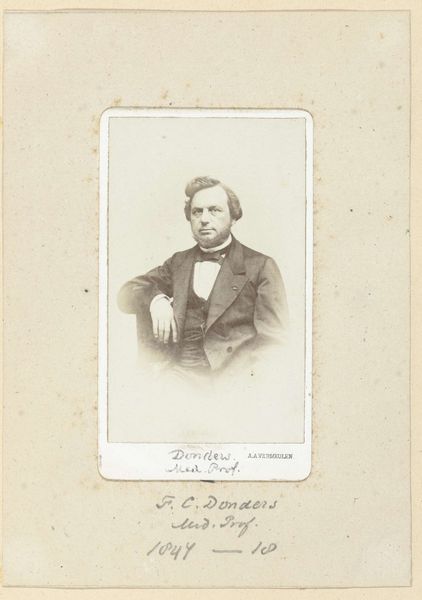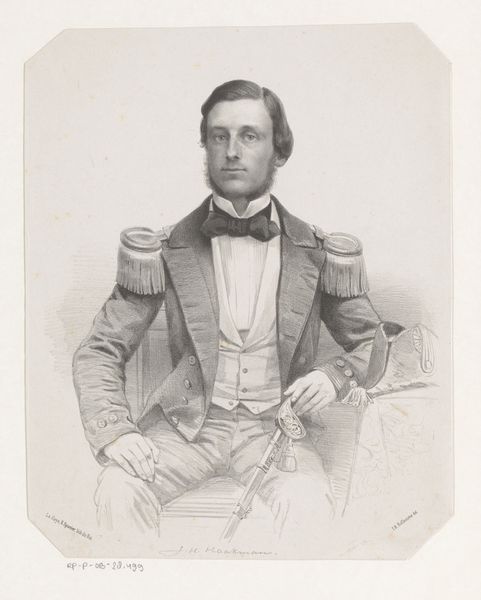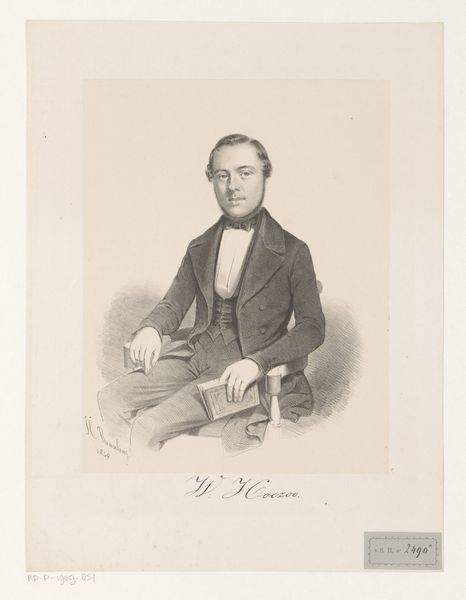
#
portrait
#
16_19th-century
# print
#
realism
Dimensions: height 299 mm, width 249 mm
Copyright: Rijks Museum: Open Domain
Editor: This is Hendrik Ringeling's "Portret van H.W. Nooy," a print from the 1840s. It strikes me as very formal, almost stiff. What can you tell me about it? Curator: Well, first consider the social context. This portrait reflects the rising bourgeois class of the 19th century and their desire for representation. Portraiture was becoming increasingly accessible, shifting from the exclusive domain of the aristocracy to a broader segment of society. Think about the act of commissioning a portrait; what did it signify about Nooy's status and aspirations? Editor: So it was a kind of social marker? A way of saying "I've arrived"? Curator: Exactly. And that relates to the public role of art. How did these images function within society? What were the cultural codes being communicated through his clothing, his pose, even the subtle suggestion of wealth? Do you think it was more about realism or conveying an ideal image? Editor: I guess a bit of both, it's realistic, but carefully staged to project a certain image. Curator: Precisely. And what impact did printmaking, as a medium, have on this broader access to imagery? It wasn't just about individual portraits; consider the proliferation of printed images and their role in shaping public opinion and reinforcing social norms. The print medium democratized art somewhat. Editor: It's fascinating to think of it not just as art, but as a historical document reflecting societal shifts. Thanks! Curator: Indeed. By looking at art this way, we gain insight into both individual stories and broader cultural narratives.
Comments
No comments
Be the first to comment and join the conversation on the ultimate creative platform.
